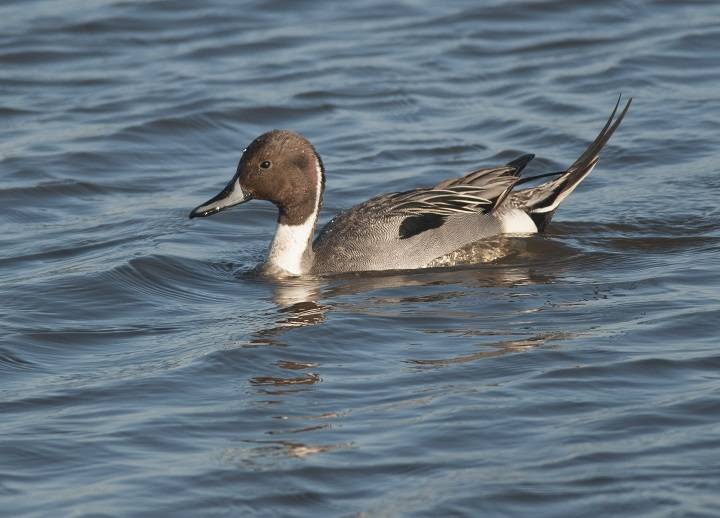Ducks are a familiar sight in the landscapes of the United Kingdom, from tranquil ponds in urban parks to expansive wetlands in rural areas. These waterfowl are not only beloved for their charming appearance and endearing behaviors but also play vital ecological roles as indicators of wetland health and contributors to ecosystem dynamics. In this comprehensive guide, we’ll delve into the diverse world of ducks found in the United Kingdom, exploring their species richness, habitats, conservation status, and the importance of preserving their natural environments.
Diversity of UK Ducks
Mallard (Anas platyrhynchos):
The Mallard is perhaps the most ubiquitous duck species in the UK, with its distinctive iridescent green head, mottled brown plumage, and characteristic quacking call. Found in a wide range of aquatic habitats, from lakes and rivers to coastal estuaries, Mallards are adaptable and opportunistic feeders, foraging on aquatic vegetation, insects, and grains.
Tufted Duck (Aythya fuligula):
Easily recognizable by its striking black and white plumage and distinctive tufted crest, the Tufted Duck is a common resident of UK lakes, ponds, and reservoirs. With its diving capabilities, the Tufted Duck feeds primarily on aquatic plants and invertebrates, using its specialized bill to filter food from the water.
Mute Swan (Cygnus olor):
The graceful Mute Swan is an iconic symbol of British waterways, known for its elegant posture, elongated neck, and orange bill. While Mute Swans are predominantly herbivorous, feeding on aquatic vegetation such as pondweed and algae, they may also supplement their diet with small aquatic animals.
Eurasian Wigeon (Anas penelope):
Winter visitors to the UK, Eurasian Wigeons are known for their distinctive whistling calls and chestnut-colored heads with creamy crowns. These dabbling ducks prefer shallow marshes and coastal estuaries, where they feed on submerged vegetation, seeds, and small invertebrates.
Common Pochard (Aythya ferina):
Recognizable by the male’s striking red head and gray body, the Common Pochard is a diving duck that frequents freshwater lakes and reservoirs throughout the UK. Pochards feed primarily on aquatic plants and seeds, using their serrated bills to grip and crush food items.
Habitat Preferences
Freshwater Habitats:
Many duck species in the UK, such as Mallards, Tufted Ducks, and Pochards, inhabit freshwater ecosystems, including lakes, ponds, rivers, and canals. These habitats provide abundant food resources, nesting sites, and shelter for ducks throughout the year.
Coastal and Estuarine Environments:
Coastal areas and estuaries serve as important wintering grounds and stopover sites for migratory duck species, including Wigeons, Teals, and Shelducks. These habitats offer a diverse array of feeding opportunities, from salt marshes and mudflats to open water channels.
Urban and Suburban Parks:
Ducks are a common sight in urban and suburban parks, where they inhabit ponds, lakes, and ornamental water features. While these habitats may lack natural biodiversity, they provide accessible opportunities for birdwatching and wildlife appreciation in urban environments.
Conservation Challenges
Habitat Loss and Degradation:
One of the greatest threats to duck populations in the UK is habitat loss and degradation due to urbanization, agricultural intensification, and infrastructure development. Wetland drainage, pollution, and invasive species also pose significant challenges to the conservation of duck habitats.
Hunting Pressure:
While hunting of waterfowl is regulated in the UK through licensing and conservation measures, illegal hunting and poaching remain ongoing concerns, particularly for vulnerable species such as the Common Pochard and Eurasian Wigeon.
UK Ducks
Conservation Initiatives
Wetland Restoration:
Conservation organizations and government agencies in the UK are actively involved in wetland restoration projects aimed at reestablishing and enhancing duck habitat quality. These initiatives include habitat creation, reedbed management, and the creation of nature reserves and protected areas.
Community Engagement:
Engaging local communities and stakeholders in duck conservation efforts is essential for promoting awareness, fostering stewardship, and garnering support for habitat restoration projects. Citizen science initiatives, educational programs, and volunteer opportunities can empower individuals to contribute to duck conservation.
Related Post:
Discovering the Enigmatic World of Rare Duck Breeds
The Essential Guide to Pet Ducks: Care, Behavior, and Joys of Keeping Ducks
Discovering the Distinctive Charm of Aylesbury Ducks: A Classic Duck Breed
The United Kingdom is home to a diverse array of duck species, each with its own unique characteristics, habitat preferences, and conservation needs. From the familiar Mallard to the elusive Eurasian Wigeon, ducks enrich our landscapes with their beauty, vitality, and ecological importance. By prioritizing habitat conservation, mitigating threats, and engaging in collaborative conservation efforts, we can ensure the continued survival and well-being of UK duck populations for generations to come. Let us embrace our role as stewards of wetland ecosystems and work together to safeguard the future of these beloved waterfowl species.




